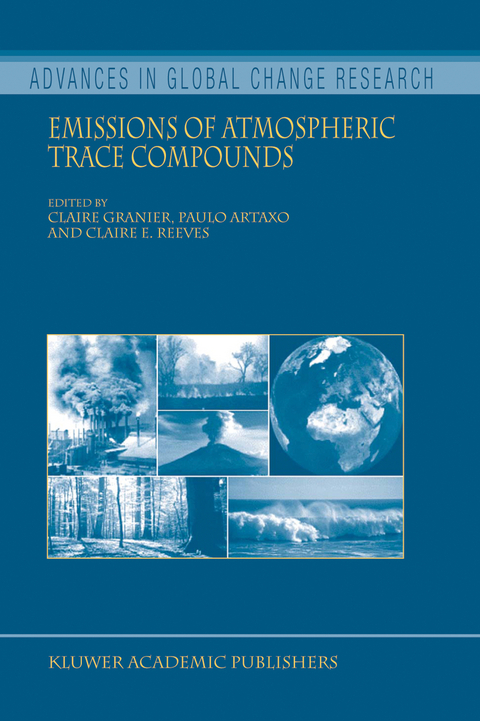
Emissions of Atmospheric Trace Compounds
Springer-Verlag New York Inc.
978-1-4020-2166-4 (ISBN)
The mathematical modelling of the transport and transformation of trace species in the atmosphere is one of the scientific tools currently used to assess atmospheric chemistry, air quality, and climatic conditions. From the scientific but also from the management perspectives accurate inventories of emissions of the trace species at the appropriate spatial, temporal, and species resolution are required. The chapter has discussed bottom-up methodologies to estimate global and regional emISSIOns. These methodologies are based on activity data, emission factors (amount of emissions per unit activity), and for some inventories additional parameters (such as sulphur content of fuels). To compile regional and global inventories researchers can either bring together estimates made at the national or sub-national level by national experts or directly estimate emissions based on activity rates from reports compiled by multi-national organizations such as the United Nations and the International Energy agency and on emission factors and other information available in the literature. In all cases the data used must be checked for transparency, consistency, comparability, completeness and accuracy. These emissions estimates must now be given finer spatial (usually gridded), temporal, and for some inventories species resolution. The location of major stationary sources (power plants, industrial complexes) is usually known, so the emissions can be directly assigned to the appropriate grid cell.
Atmospheric Composition and Surface Exchanges.- Compilation of Regional to Global Inventories of Anthropogenic Emissions.- Deriving Global Quantitative Estimates for Spatial and Temporal Distributions of Biomass Burning Emissions.- Global Organic Emissions from Vegetation.- Nitrogen Emissions from Soils.- Global Emissions of Mineral Aerosol: Formulation and Validation Using Satellite Imagery.- Emissions from Volcanoes.- A Satellite-based Method for Estimating Global Oceanic DMS and its Application in a 3-D Atmospheric GCM.- Sea-salt Aerosol Source Functions and Emissions.- Use of Isotopes.- Determination of Emissions from Observations of Atmospheric Compounds.- Data Assimilation and Inverse Methods.- List of acronyms.- List of chemical species.- Color plates.- Copyright acknowledgments.
| Erscheint lt. Verlag | 26.5.2004 |
|---|---|
| Reihe/Serie | Advances in Global Change Research ; 18 |
| Zusatzinfo | 67 Illustrations, color; 143 Illustrations, black and white; 560 p. 210 illus., 67 illus. in color. |
| Verlagsort | New York, NY |
| Sprache | englisch |
| Maße | 155 x 235 mm |
| Themenwelt | Naturwissenschaften ► Biologie ► Ökologie / Naturschutz |
| Naturwissenschaften ► Geowissenschaften ► Geologie | |
| Naturwissenschaften ► Geowissenschaften ► Meteorologie / Klimatologie | |
| ISBN-10 | 1-4020-2166-6 / 1402021666 |
| ISBN-13 | 978-1-4020-2166-4 / 9781402021664 |
| Zustand | Neuware |
| Haben Sie eine Frage zum Produkt? |
aus dem Bereich


